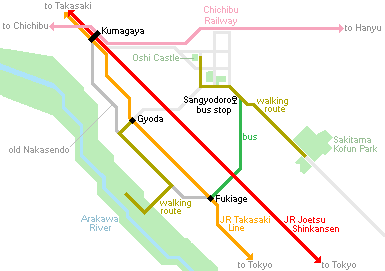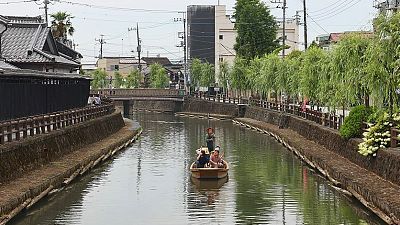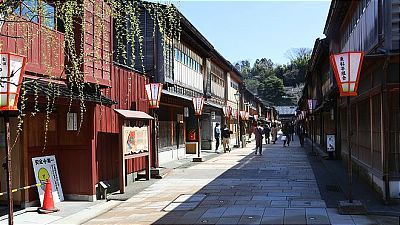A Stroll Through Gyoda
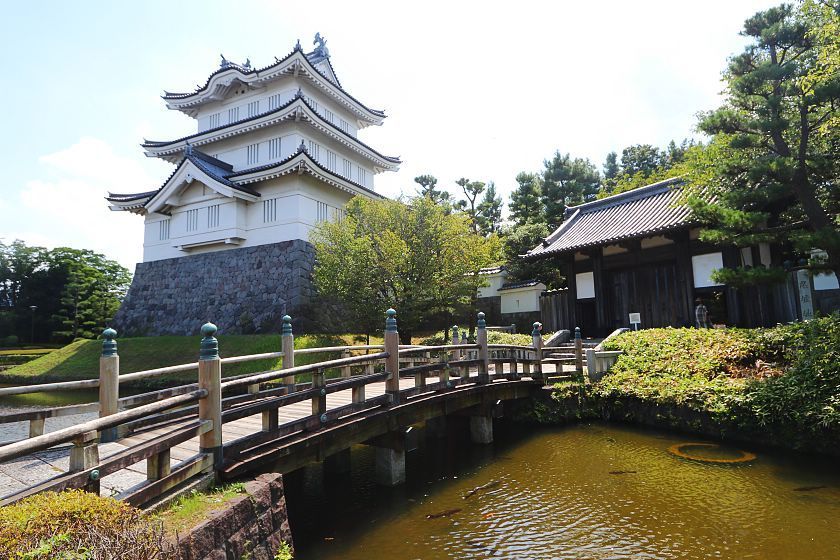
Located just over an hour from Tokyo on the JR Takasaki Line, the small, sleepy city of Gyoda in Saitama Prefecture is relatively unknown outside of the region but boasts some great sightseeing spots and a surprising level of historical depth.
Wandering the Arakawa Floodplain
Arriving into Gyoda Station on a bright, hot summer morning, I made my way around 200 meters southwest to an attractive pathway running along the top of a high bank overlooking the floodplain of the Arakawa River. Once part of the historical Nakasendo Highway, a key thoroughfare connecting Tokyo to Kyoto, the trail serves today mainly as a scenic route for cyclists and walkers.
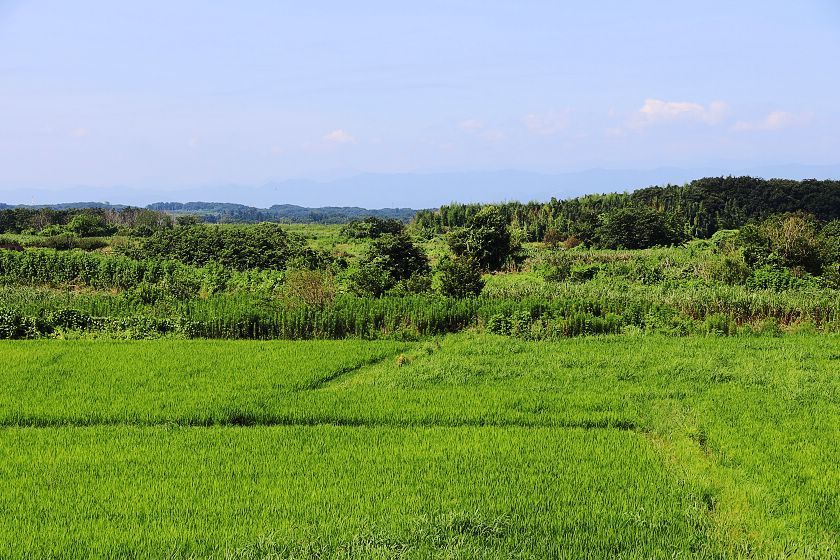
After continuing along the trail and enjoying the view for a while, I took a smaller path leading into a patchwork of rice fields and smaller allotments amidst heavy, tangled undergrowth.
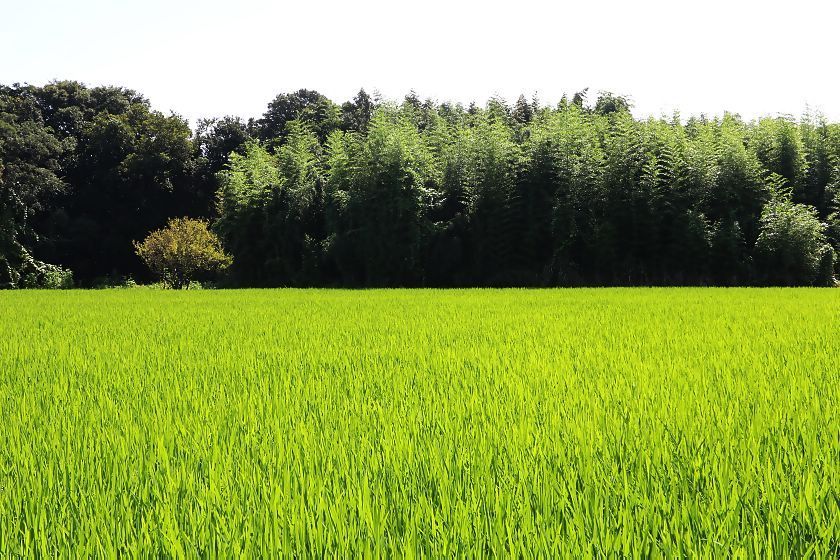
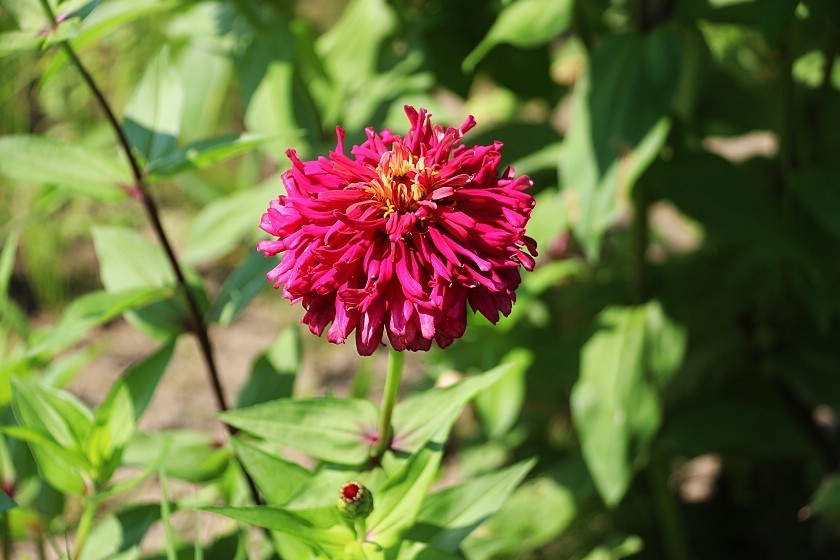
The floodplain covers a surprisingly wide area and the pathways narrowed to nothing long before I could catch a glimpse of what remained of the river itself, but it was still a very pleasant area to explore as birds sang from trees and large dragonflies zipped through the air around me.
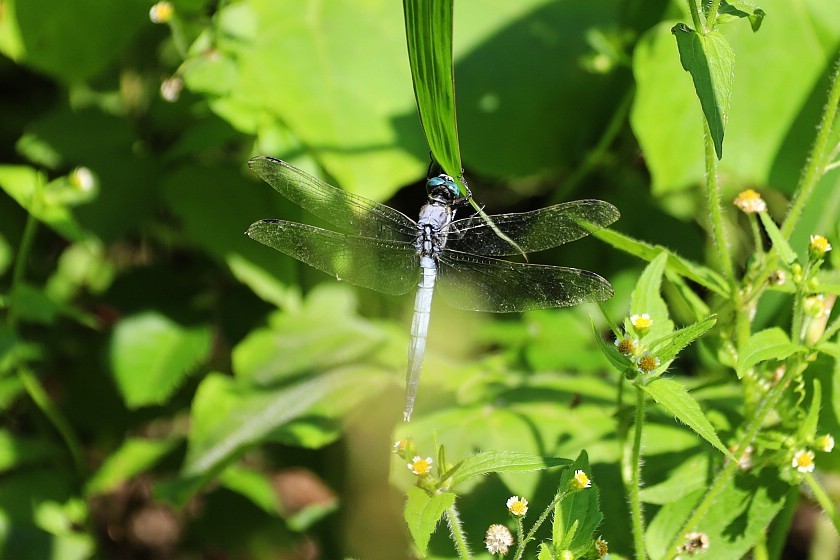
Sakitama Kofun Park
Retracing my steps to Gyoda Station, I travelled one stop to Fukiage Station and from there took a sightseeing bus to the Sakitama Kofun Park, a spacious and attractive public park built around nine ancient burial mounds. Built to house the remains of important tribal chiefs from around 300-700 AD, kofun can be found throughout Japan, usually grouped together in clusters of which Sakitama is one of the largest.
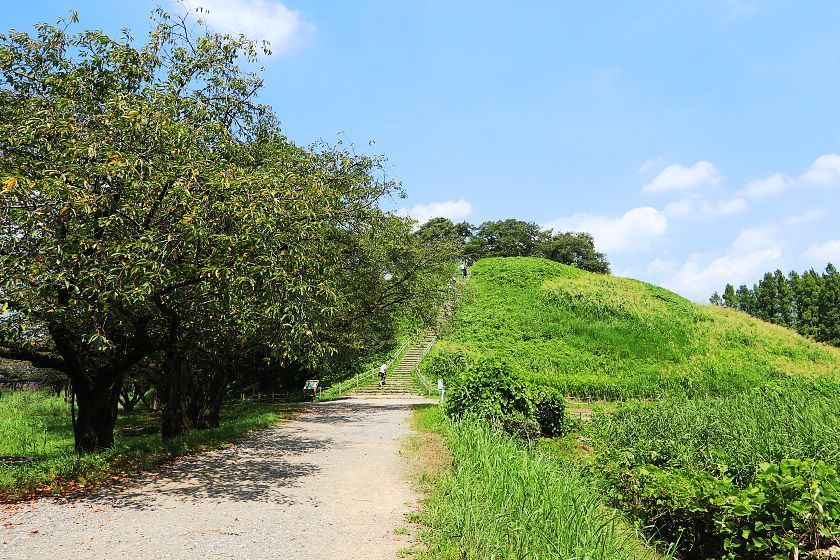
Unlike many Japanese historical sites from later periods, the tombs themselves have been left largely unrestored, overgrown with thick grass and with their moats leveled and dry. For me at least, this simplicity only added to the park's peaceful atmosphere and there remained a powerful sense of the history around me as I wandered along its pathways.
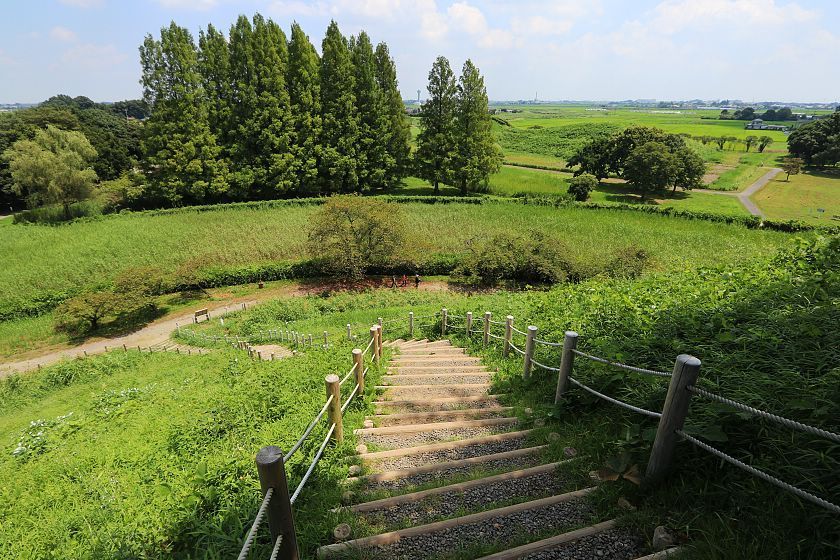
Visitors to the park are allowed to climb two of the ancient tombs; the Maruhakayama Kofun, the largest circular tomb in Japan, and the Inariyama Kofun, built like all the rest at Sakitama in a keyhole shape surrounded by two concentric moats.
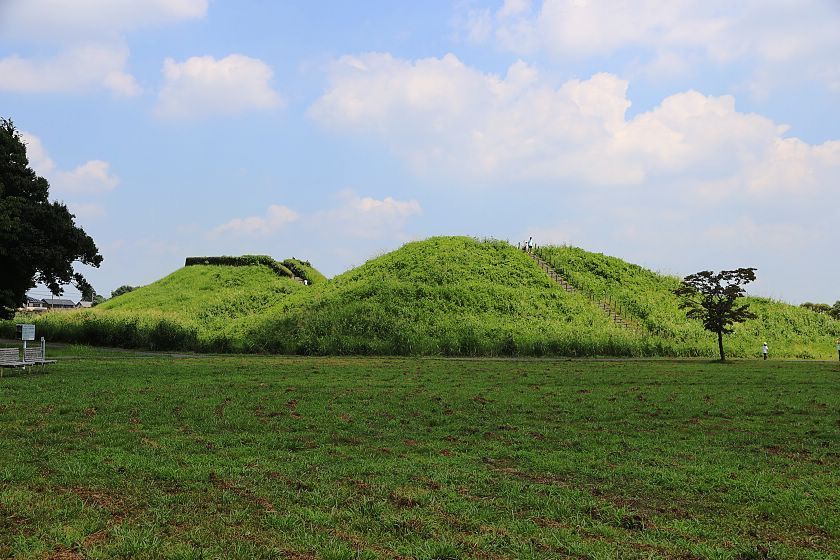
The area surrounding the Kofun is wide and flat, offering sweeping views from the top of Gyoda City to the east, and neatly arranged rice fields to the west.
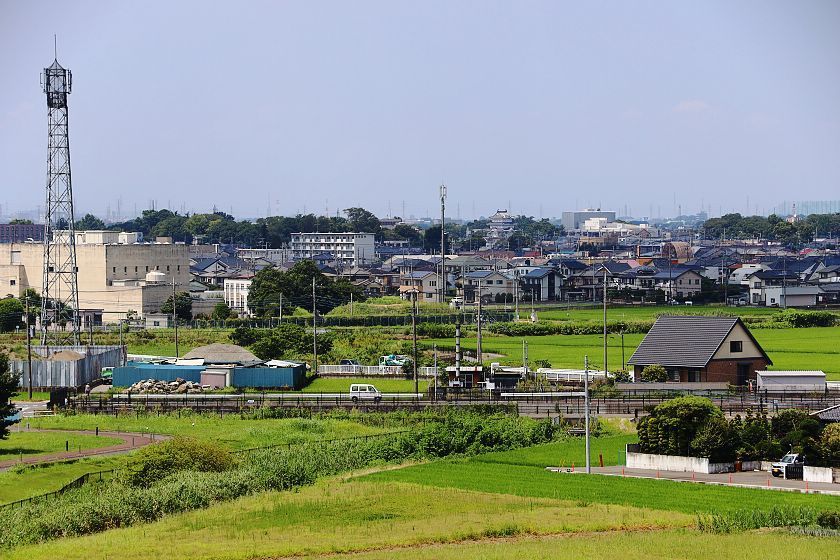
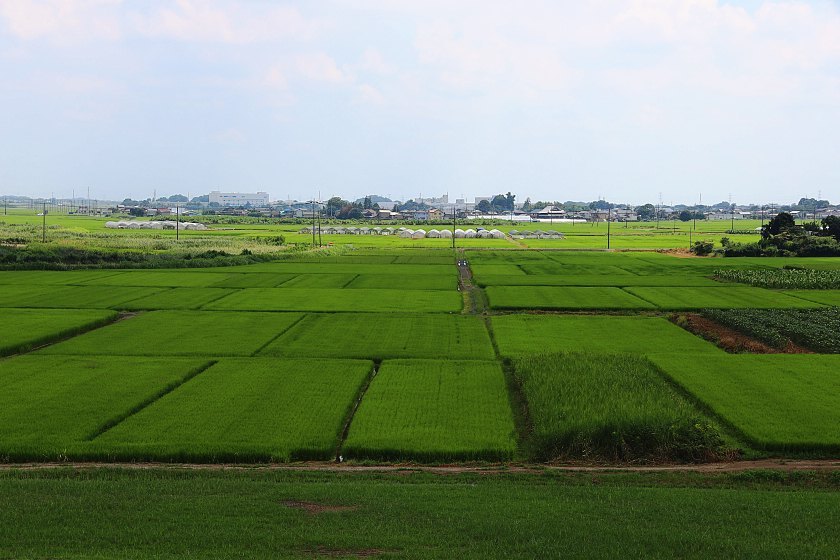
At 138 meters in length, the Futagoyama Kofun is the largest and most impressive of Sakitama's tombs. Dating to the sixth century AD, excavations around the tomb revealed a large volume of grave goods including many haniwa - cylindrical figures of people and animals in unglazed pottery - confirming that it was made for someone of great importance, perhaps even royalty.
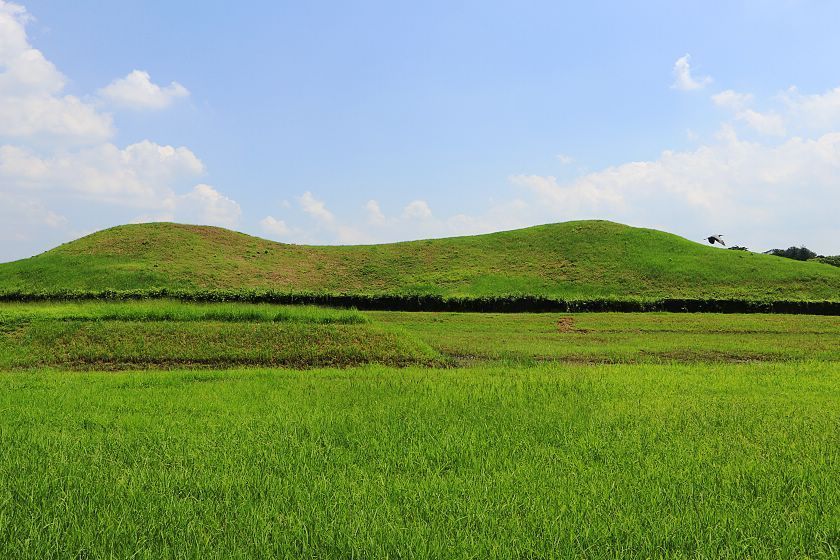
Prefectural Museum of the Ancient Burial Mounds
Located on the south side of the park, the Saitama Prefectural Museum of the Sakitama Ancient Burial Mounds is well worth a visit for anyone interested in the kofun and their origins. Besides a series of panels detailing the archaeology of the various tombs with some explanation available in English, the museum contains a trove of recovered grave goods from distinctive animal-shaped pottery to highly ornate horse-riding gear and weaponry.
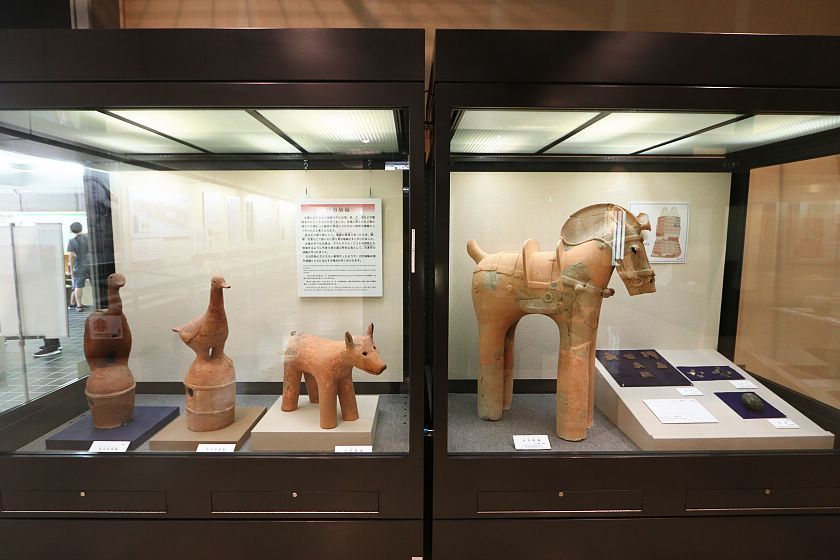
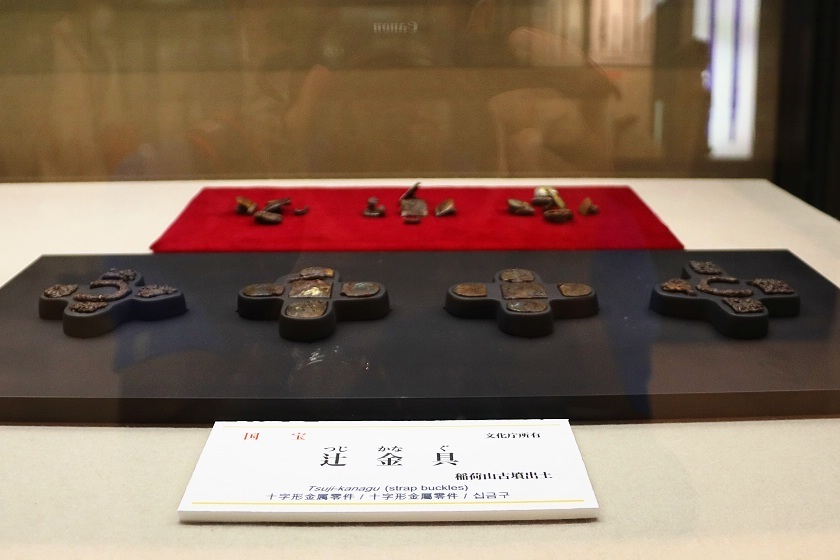
Especially striking is the famous Inariyama Sword, forged from iron inscribed with Chinese characters in gold, identifying its owner as Wowake, a powerful local warrior from around the fifth century.
The Endo House
Directly opposite the museum stands a beautifully preserved thatched-roof house from the late Edo Period, painstakingly relocated from the nearby town of Satte where it had been the home of a wealthy farmer and his family.
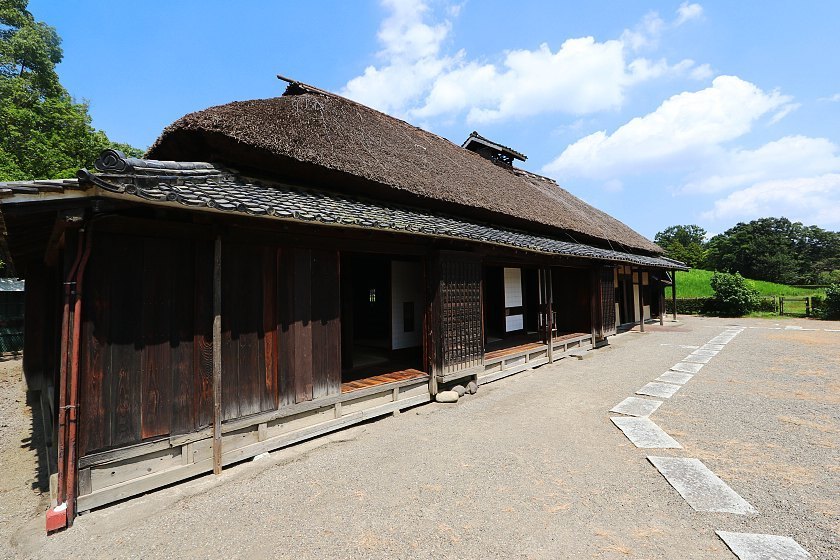
Inside, many fascinating details remain intact from the family's Shinto altar to a boat stored in the roof to be used in the event of a sudden flood.
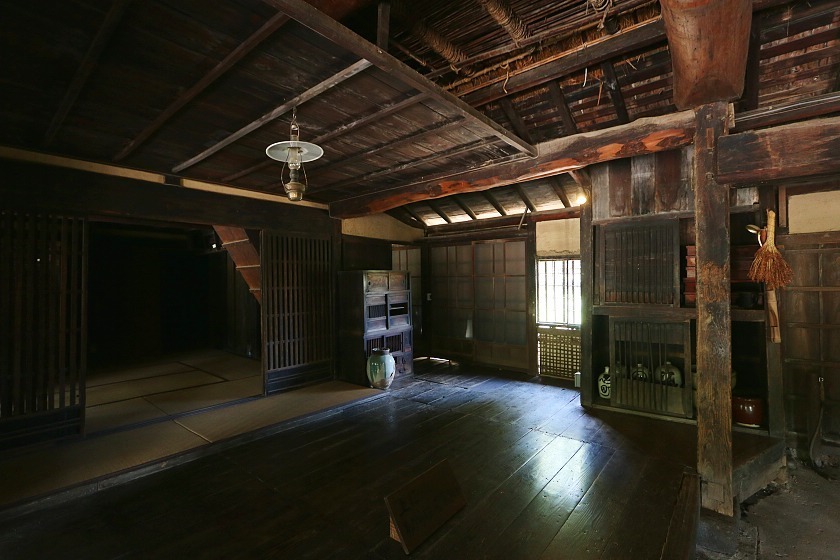
Gyoda City Streets
From Sakitama Kofun Park I continued on towards the reconstructed Oshi Castle, threading my way through quiet streets dotted with attractive little gardens, quaint houses with traditional stone storehouses and patches of thick undergrowth giving it the impression of a smaller, more rural town.
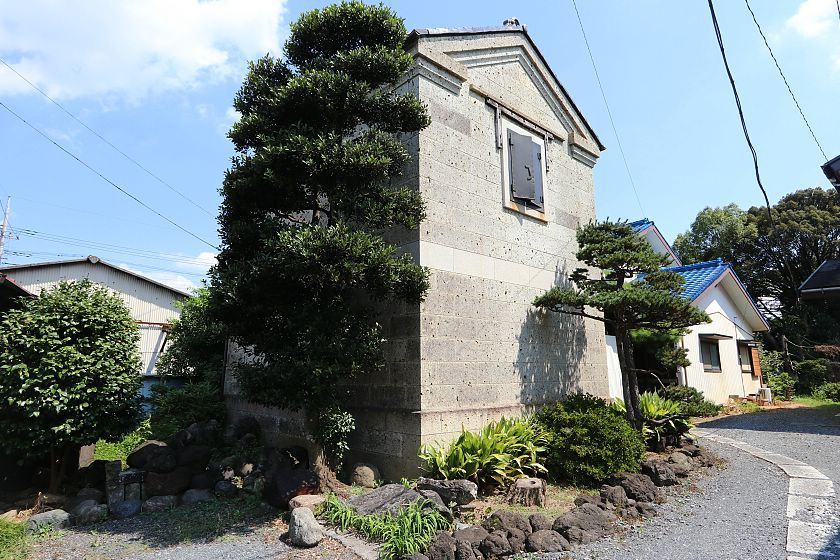
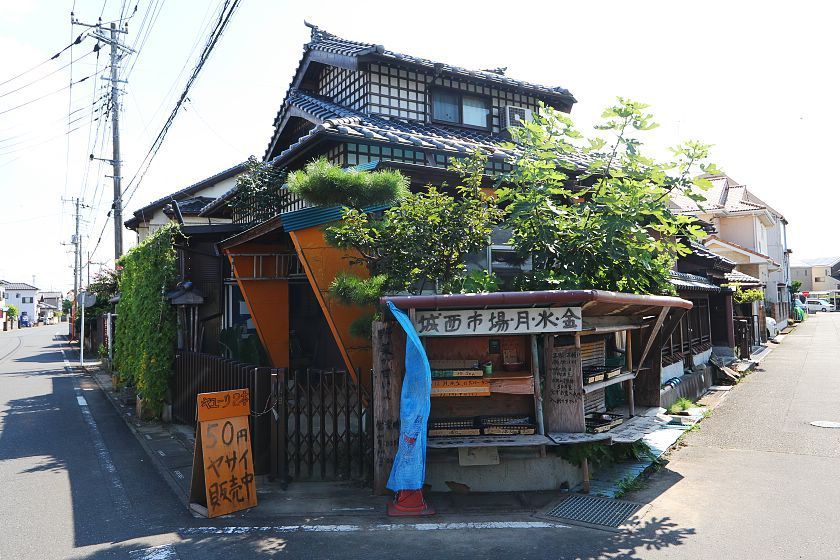
Oshi Castle
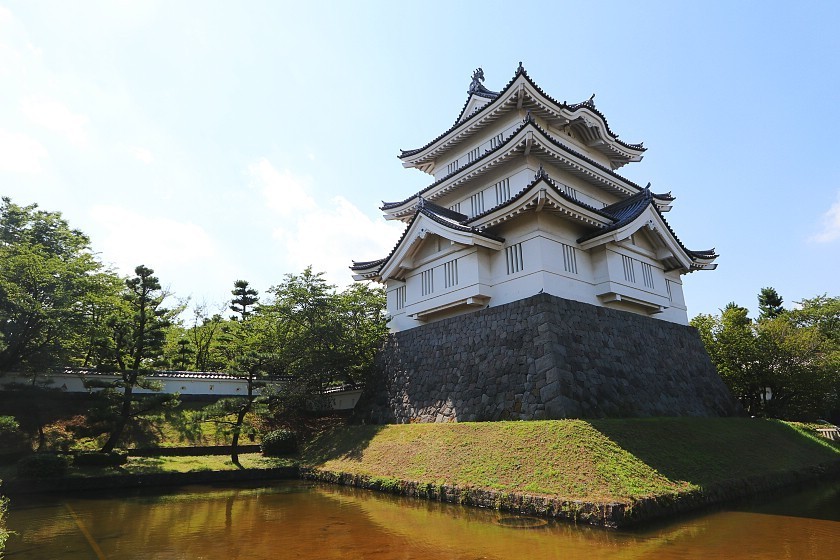
Once the center of the powerful Oshi domain, Oshi Castle is best known for its part in the history of Japan's Warring States Period. In 1590, the castle withstood a lengthy siege by the forces of warlord Toyotomi Hideyoshi, continuing to hold out against numerous attacks and even an attempt to flood its defences, earning it the nickname "Turtle Castle". The events of the siege passed into legend and were later made into the popular 2012 historical film, Nobo no Shiro (The Floating Castle).
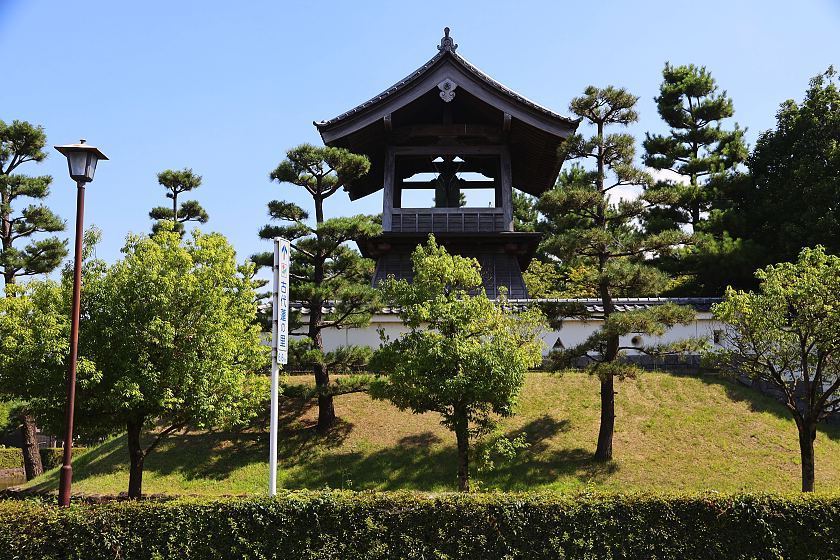
After its overlords were defeated elsewhere at the Siege of Odawara, the castle and its territory came into the hands of Hideyoshi's successor Tokugawa Ieyasu, and prospered greatly during the Edo Period due to its position on the Nakasendo Highway, before it was finally torn down following the Meiji Restoration.
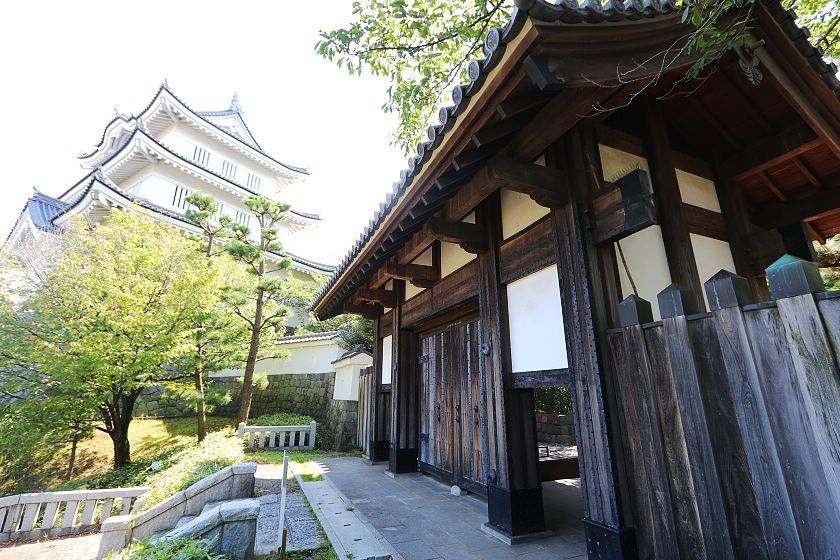
Today, visitors can see an elegant reconstruction of the castle's central turret, standing in small but attractive grounds beside a short section of moat and an impressive gate of iron-capped timber, the only surviving feature of the Edo Period structure. Passing underneath, I find myself in a peaceful, leafy courtyard enclosed by authentic-looking white stone ramparts, complete with wooden buttresses and gun slits.
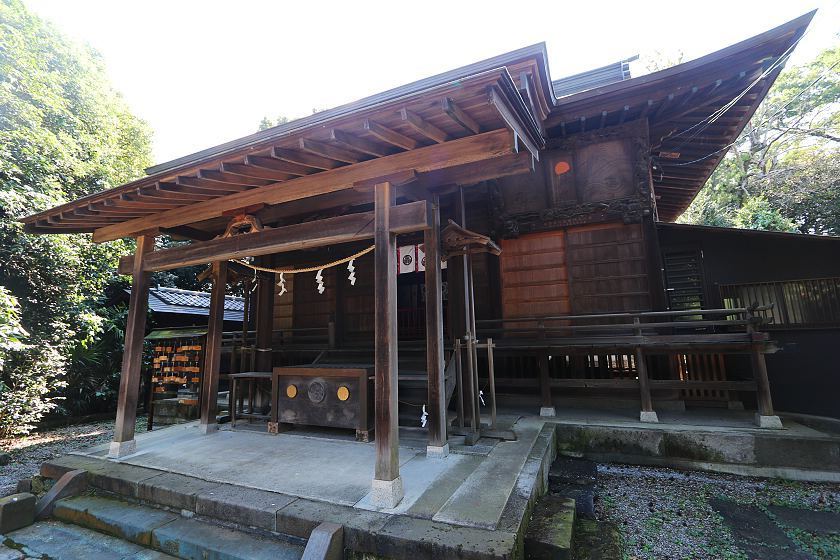
Gyoda City Folk Museum
Also located within the castle grounds, the Gyoda City Folk Museum is a large, stone brick building built in the style of an Edo Period storehouse to blend with its surroundings. Inside, floor to ceiling windows look out onto a small landscape garden enclosed by castle walls, and a bridge extends into the turret building allowing visitors to climb up and enjoy views of the city and its surroundings.
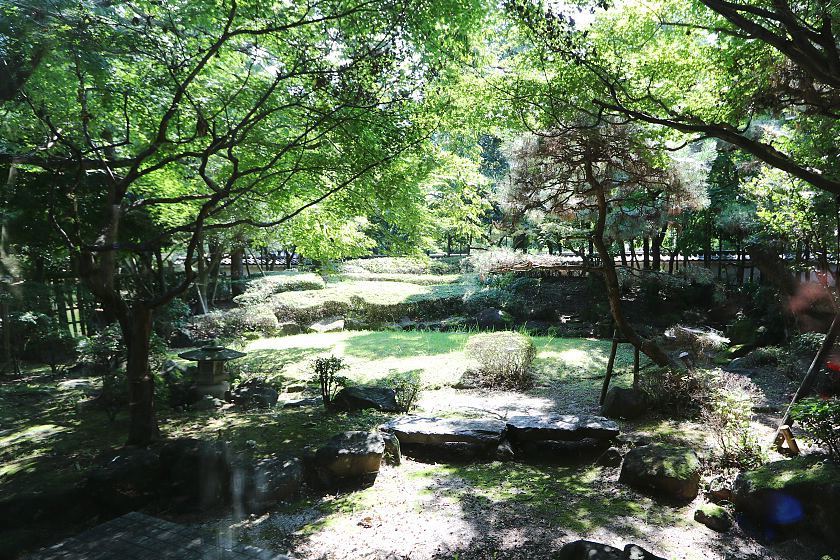
Reflecting the castle's scale and importance, the museum boasts an impressive collection of artifacts ranging from weapons and armor to construction tools and even clothes and uniforms. Explanations in English were on the limited side, but its displays were interesting and well-illustrated, and I was especially impressed by a 3D model of the castle's original floorplan showing its surprisingly large scale.
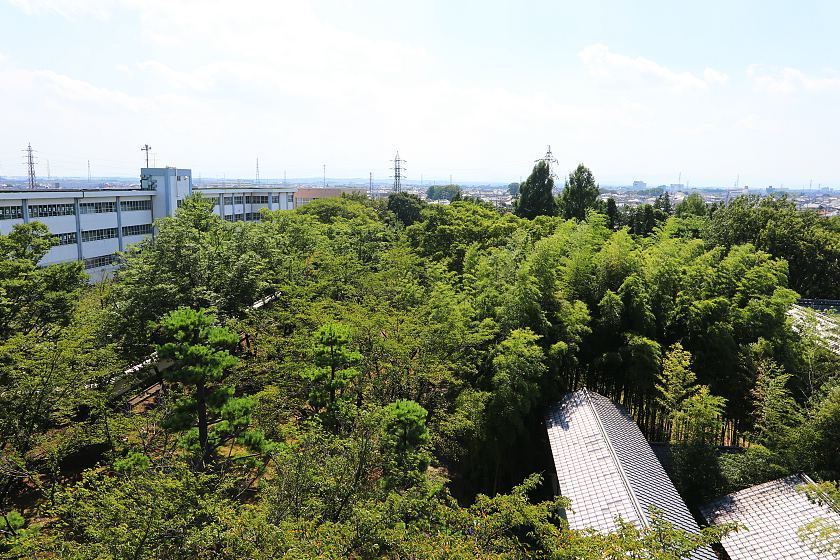
Access
How to get to Gyoda from Tokyo
From Tokyo Station, take the JR Takasaki Line to Gyoda Station (about one hour, 990 yen, three departures per hour). For Sakitama Kofun Park, you can take the JR Takasaki Line directly to Fukiage Station (about one hour, 990 yen), then take an Asahi bus to Sangyodoro bus stop (7 minutes, 210 yen, departures approximately every 15 minutes), from where the park is a 15 minute walk.
Oshi Castle is a pleasant walk of around half an hour from Sakitama Kofun Park, or alternatively you can make your way back to the Sangyodoro bus stop and take an Asahi bus to Gyoda Honcho bus stop (4 minutes, 180 yen), from where it is a 10 minute walk to the castle.
